
Charles John Huffam Dickens was an English novelist, journalist, short story writer and social critic. He created some of literature's best-known fictional characters, and is regarded by many as the greatest novelist of the Victorian era. His works enjoyed unprecedented popularity during his lifetime and, by the 20th century, critics and scholars had recognised him as a literary genius. His novels and short stories are widely read today.

William Powell Frith was an English painter specialising in genre subjects and panoramic narrative works of life in the Victorian era. He was elected to the Royal Academy in 1853, presenting The Sleeping Model as his Diploma work. He has been described as the "greatest British painter of the social scene since Hogarth".

Athene Seyler was an English actress.

Nicholas Nickleby, or The Life and Adventures of Nicholas Nickleby, is the third novel by English author Charles Dickens, originally published as a serial from 1838 to 1839. The character of Nickleby is a young man who must support his mother and sister after his father dies.

Rose Lilian Hill was an English actress and operatic soprano, who remains best known for her role as Madame Fanny La Fan in the British television series 'Allo 'Allo!. She was a member of the Royal Shakespeare Company.

The Life and Adventures of Nicholas Nickleby is an 8½ hour-long adaptation of Charles Dickens’ 1839 novel, performed in two parts. Part 1 was 4 hours in length with one interval of 15 minutes. Part 2 was 4½ hours in length with two intervals of 12 minutes. It was originally presented onstage over two evenings, or in its entirety from early afternoon with a dinner break. Later it was presented on television over four evenings.
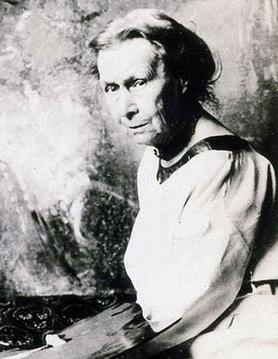
Annie Louisa Swynnerton, ARA was a British painter best known for her portrait and symbolist works. She studied at Manchester School of Art and at the Académie Julian, before basing herself in the artistic community in Rome with her husband, the monumental sculptor Joseph Swynnerton. Swynnerton was influenced by George Frederic Watts and Sir Edward Burne-Jones. John Singer Sargent appreciated her work and helped her to become the first elected woman member at the Royal Academy of Arts in 1922. Swynnerton painted portraits of Henry James and Millicent Fawcett. Her main public collection of works are in Manchester Art Gallery, but individual works are also held in a few other English cities, as well as can also be seen in Glasgow, Dublin, Paris, and two in Melbourne, Australia. Annie was a close friend of leading suffragists of the day, notably the Pankhurst family.

The artists of the Tudor court are the painters and limners engaged by the monarchs of England's Tudor dynasty and their courtiers between 1485 and 1603, from the reign of Henry VII to the death of Elizabeth I.

Sigismunda mourning over the Heart of Guiscardo, fully titled Sigismunda mourning over the Heart of Guiscardo, her murder'd Husband, is an oil painting by British artist William Hogarth. Finished in 1759, it was the principal piece of the eight works he displayed in an exhibition in 1761. It was the final and most ambitious of his attempts to secure for himself a reputation as a history painter. It depicts a dramatic moment in one of the novelle in Boccaccio's Decameron. While Hogarth had expected this work to be acclaimed as a masterpiece of dramatic painting, the work was met with criticism and ridicule. In the catalogue of the exhibition of Hogarth's works at the Tate Gallery in 2007, the criticism was described as "some of the most damning critical opprobrium the artist ever suffered".
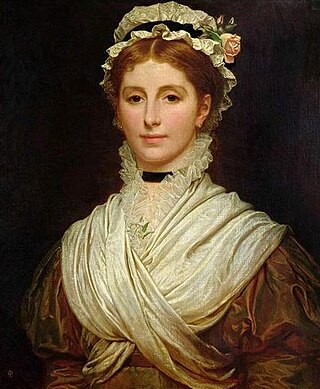
Catherine Elizabeth Macready Perugini was an English painter of the Victorian era and the daughter of Catherine Dickens and Charles Dickens.

Louise Jane Jopling was an English painter of the Victorian era, and one of the most prominent female artists of her generation.
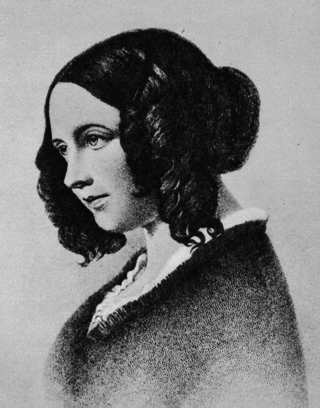
Catherine Thomson "Kate" Dickens was the Scottish wife of English novelist Charles Dickens, the mother of his ten children, and a writer of domestic management.

Samuel Drummond was a British painter, especially prolific in portrait and marine genre painting. His works are on display in the National Portrait Gallery, the National Maritime Museum and the Walker Art Gallery.
Emma Eleonora Kendrick was a British miniature-painter who was prominent during the reigns of Kings George IV and William IV.
Jane Stuart was an American painter, best known for her miniature paintings and portraits, particularly those made of George Washington. She worked on and later copied portraits made by her father, Gilbert Stuart, and created her own portraits. In the early 19th century, she assumed the responsibility of supporting her family after her father's death. She first worked in Boston, but later moved to Newport, Rhode Island, where she was the first woman who painted portraits. In 2011, she was inducted into the Rhode Island Heritage Hall of Fame.
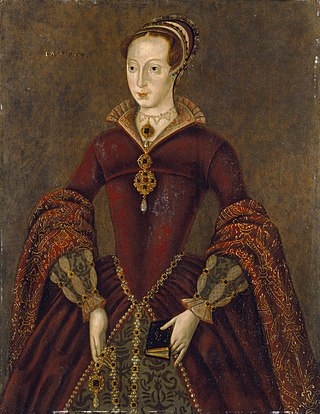
The "Streatham" portrait is an oil painting on panel from the 1590s believed to be a later copy of an earlier portrait of the English noblewoman and Queen Lady Jane Grey. It shows a three-quarter-length depiction of a young woman in Tudor-period dress holding a prayer book, with the faded inscription "Lady Jayne" or "Lady Iayne" in the upper-left corner. It is in poor condition and damaged, as if it has been attacked. As of January 2015 the portrait is in Room 3 of the National Portrait Gallery in London.

Emma Brownlow was a Victorian era artist who is best known for her paintings depicting scenes from life at the Foundling Hospital in London.
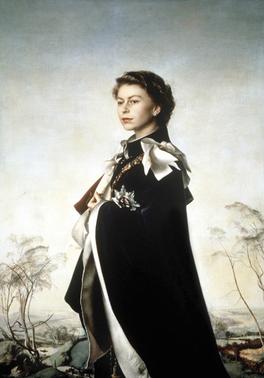
Pietro Annigoni completed a number of portraits of Queen Elizabeth II between 1954 and 1972. In 1955, he painted her for the Worshipful Company of Fishmongers and in 1969 for the National Portrait Gallery. The two portraits were united for the National Portrait Gallery's exhibition; The Queen: Art and Image, held to mark the Diamond Jubilee of Queen Elizabeth II in 2012. In 1972, Annigoni completed a circular drawing of the Queen and Prince Philip, Duke of Edinburgh to mark their silver wedding anniversary.

Mary Scott Hogarth was the sister of Catherine Dickens and the sister-in-law of Charles Dickens. Hogarth first met Charles Dickens at age 14, and after Dickens married Hogarth's sister Catherine, Mary lived with the couple for a year. Hogarth died suddenly in 1837, which caused Dickens to miss the publication dates for two novels: The Pickwick Papers and Oliver Twist. Hogarth later became the inspiration for a number of characters in Dickens novels, including Rose Maylie in Oliver Twist and Little Nell in The Old Curiosity Shop. Charles and Catherine Dickens' first daughter was named Mary in her memory.

Jane Hogarth was a British printseller and businesswoman who preserved the rights to the artwork of her husband, William Hogarth, following his death. She successfully continued to produce and sell his work for many years.

















